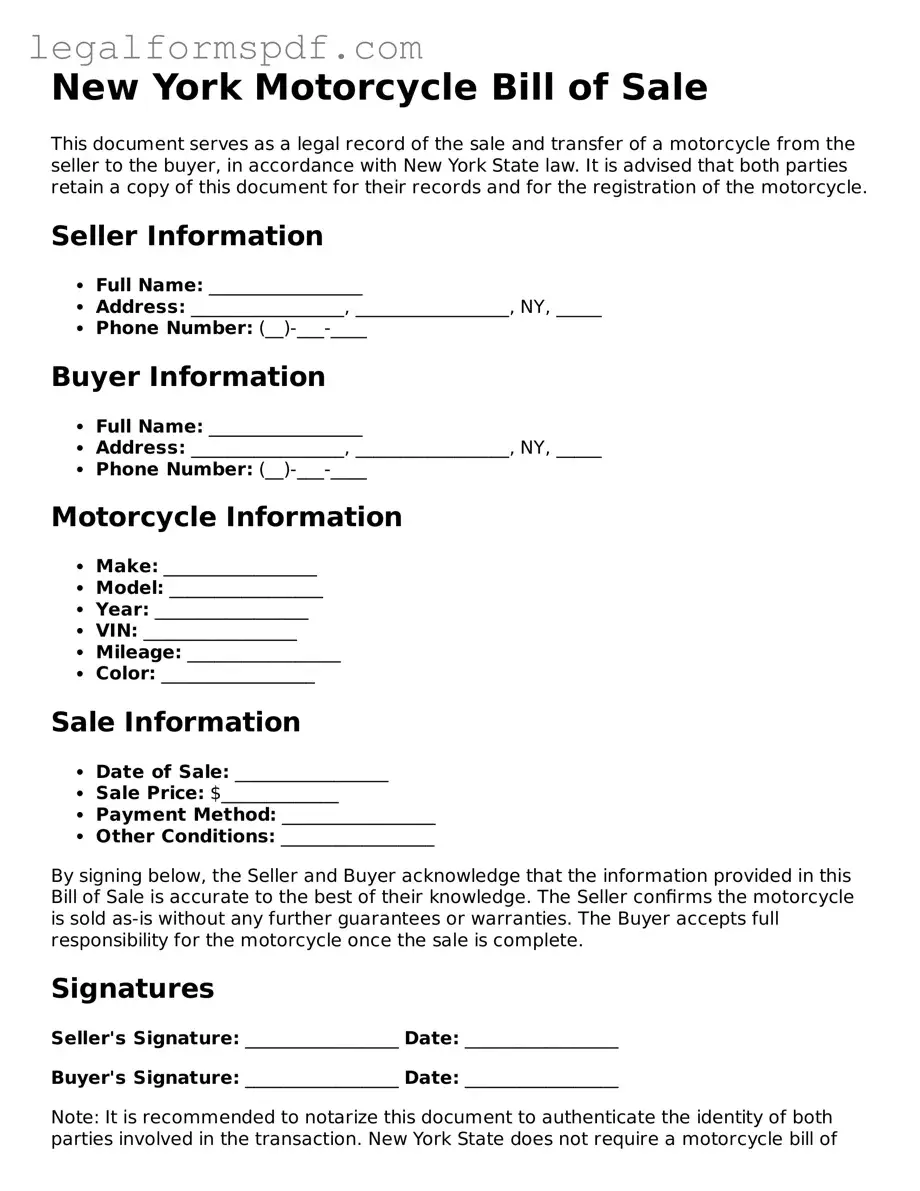What is a New York Motorcycle Bill of Sale?
A New York Motorcycle Bill of Sale is a legal document that records the sale and transfer of ownership of a motorcycle from a seller to a buyer within the state of New York. It details the transaction and serves as proof of purchase and ownership.
Why do I need a Motorcycle Bill of Sale in New York?
It is necessary to have a Motorcycle Bill of Sale in New York for several reasons: to legally document the transaction, to register the motorcycle under the new owner's name at the DMV, and to protect both the buyer and seller in the event of future disputes over the motorcycle's ownership.
What information should be included in the form?
The form should include the date of sale, full names and addresses of both the seller and the buyer, detailed description of the motorcycle (including make, model, year, and VIN), selling price, and signatures of both parties involved in the transaction.
Is notarization required for a New York Motorcycle Bill of Sale?
Notarization is not mandatory for a Motorcycle Bill of Sale in New York. However, having the document notarized can add an extra layer of authenticity, making it more credible if its validity is ever questioned.
Can I create my own Motorcycle Bill of Sale?
Yes, you can create your own Motorcycle Bill of Sale. Ensure it includes all necessary information to be legally binding. Although templates are available, creating your own requires careful attention to detail to ensure it's valid and comprehensive.
How does the Motorcycle Bill of Sale protect me?
For sellers, it serves as evidence that legal ownership of the motorcycle has been transferred to the buyer, releasing them from liability. For buyers, it acts as proof of purchase and ownership, which is crucial for registration and in cases of disputes or theft.
Do I need to register the Motorcycle Bill of Sale with any government agency in New York?
No, you don't need to register the Motorcycle Bill of Sale with any government agency in New York. However, the buyer is required to present this document at the DMV when registering the motorcycle in their name.
What happens if I lose my Motorcycle Bill of Sale?
If the Motorcycle Bill of Sale is lost, it's recommended to draft a new one, if possible, with both parties re-signing the document. For further protection, both the buyer and seller should keep copies of the Bill of Sale for their records.
